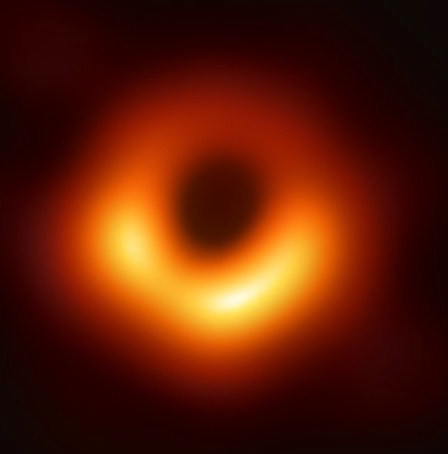TITANs News, Activities, Achievements
(see Twitter, Facebook, Instagram links further below for updates)
Under construction
December 2023: CALL FOR TWO POSTDOCTORAL POSITIONS
 The "Millennium Nucleus for Transversal Research and Technology to explore Supermassive Black Holes" (TITANs) has opened two postdoctoral positions, each for 2 years. For the job advertisement, see HERE.
The "Millennium Nucleus for Transversal Research and Technology to explore Supermassive Black Holes" (TITANs) has opened two postdoctoral positions, each for 2 years. For the job advertisement, see HERE.
International award for TITANS researcher Stefano Bovino
 The German Astronomical Society (AG) has awarded Dr. Stefano Bovino, from The Nucleus Millenium TITANS, and Dr. Tommaso Grassi, from the Max Planck Institute for Extraterrestrial Physics, with the Astrophysical Software Award for the development of the astrochemistry package KROME.
The German Astronomical Society (AG) has awarded Dr. Stefano Bovino, from The Nucleus Millenium TITANS, and Dr. Tommaso Grassi, from the Max Planck Institute for Extraterrestrial Physics, with the Astrophysical Software Award for the development of the astrochemistry package KROME.
KROME is an open-source code that was developed to include chemistry and thermal processes in numerical hydrodynamical simulations to properly describe the thermal evolution of gas. It is a key tool to study, among the others, star-forming regions, galaxy evolution, black hole formation, complex chemical pathways, as well as to compare simulations with observational data of atomic or molecular lines. KROME can model any chemical network for which the reaction rates are known and includes modules to incorporate dust physics. The development of KROME has expanded the possibilities for modelling thermochemistry in astrophysical simulations and has contributed to significant advances in astrophysical knowledge and to the education of students and postdocs in astrochemistry.
Dr. Bovino says "with KROME we run dynamic simulations to understand the physics of different regions of space. Normally, what one wants to do is include the thermodynamics part, to know how both the gas temperature and the chemistry of the interstellar medium are regulated and evolved, so we can compare the theoretical results with the observations".
Since 2011 there has been five KROME schools and more than 200 participants from all over the world.
New EHT Image
20.05.2021: Check the recent image
 We will study the formation of supermassive black holes under realistic conditions, taking into account gas-dynamical processes, chemistry and cooling, as well as stellar dynamical processes to obtain realistic models, and including the derivation of gravitational wave signatures from the formation process. These investigations will be complemented with accurate measurements of the black hole mass function .
We will study the formation of supermassive black holes under realistic conditions, taking into account gas-dynamical processes, chemistry and cooling, as well as stellar dynamical processes to obtain realistic models, and including the derivation of gravitational wave signatures from the formation process. These investigations will be complemented with accurate measurements of the black hole mass function .
SMBHs: inner structure
Accretion inflows, outflow (jets), and more black hole shadows
 We will explore, in a large sample of nearby galaxies, black hole accretion inflows and outflows (jets) in the immediate surroundings of the black hole (10s to 1000s Schwarzschild radii; via the EHT, GMVA. LBA, and EVN), the accretion disk structure and instabilities (100 to 1000s Schwarzschild radii; via reverberation mapping like techniques in double peakers), and on galaxy scales (10pc to kpc scales; via VLT/MUSE and ALMA) in samples of nearby AGN. We continue to participate in ongoing EHT observations and imaging of M87, SgrA*, and several powerful AGNs already observed with the EHT. Technical improvements since 2017 now allow the EHT to image the jet base (less than 100 gravitational radii) in several dozens of AGNs. Within the EHT Collaboration, we lead the project to identify the definitive sample of AGNs for all EHT and next-generation-EHT (ngEHT) observations in the coming decades. We expect to obtain the first EHT observations of the first of these over 2021-22. We are also active particpants in the ngEHT project, a first step towards imaging the black hole shadow in tens to hundreds of AGNs. These studies will be complemented through numerical simulations probing instabilities in the inner accretion disk and the onset and feedback of the accretion flow on sub-parsec scales and GRHMD simulations to predict the results of EHT imaging of the accretion inflow in a large number of AGNs.
We will explore, in a large sample of nearby galaxies, black hole accretion inflows and outflows (jets) in the immediate surroundings of the black hole (10s to 1000s Schwarzschild radii; via the EHT, GMVA. LBA, and EVN), the accretion disk structure and instabilities (100 to 1000s Schwarzschild radii; via reverberation mapping like techniques in double peakers), and on galaxy scales (10pc to kpc scales; via VLT/MUSE and ALMA) in samples of nearby AGN. We continue to participate in ongoing EHT observations and imaging of M87, SgrA*, and several powerful AGNs already observed with the EHT. Technical improvements since 2017 now allow the EHT to image the jet base (less than 100 gravitational radii) in several dozens of AGNs. Within the EHT Collaboration, we lead the project to identify the definitive sample of AGNs for all EHT and next-generation-EHT (ngEHT) observations in the coming decades. We expect to obtain the first EHT observations of the first of these over 2021-22. We are also active particpants in the ngEHT project, a first step towards imaging the black hole shadow in tens to hundreds of AGNs. These studies will be complemented through numerical simulations probing instabilities in the inner accretion disk and the onset and feedback of the accretion flow on sub-parsec scales and GRHMD simulations to predict the results of EHT imaging of the accretion inflow in a large number of AGNs.